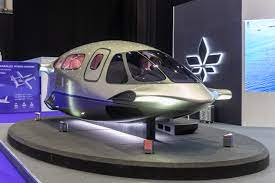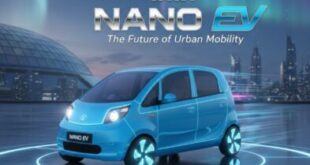
Technological advancements enable new experiences and power the evolution of the entire humankind. A relevant example is air taxis that are promising to transform the way we travel. Air taxi pilot projects are already underway, although commercialization on a mass scale is still years away. Here we look at the benefits, risks and challenges of air taxis and how this sector will evolve by the end of this decade.
Benefits of air taxis
Time saver – One of the key benefits of air taxis will be a significant reduction in travel time. Roads remain congested and traffic is getting worse with every passing day. A destination that takes an hour to reach by road can be done in less than 10 minutes by air taxis.
No security checks – Air taxis will function like Uber, where passengers will not be required to undergo lengthy security checks like at airports. Intercity journeys will thus become a lot faster and convenient.
Quick access to remote locations – Remote locations that are difficult to reach by road will become easily accessible with air taxis. This will be useful for various purposes such as tourism, medical emergencies, etc.
Medical applications – Air taxis will be a big boost to providing prompt medical assistance in case of medical emergencies. Air taxis will also facilitate faster transfers of donated organs that have very limited shelf life.
Building to building journeys – In the future, new buildings will be equipped with dedicated infrastructure for air taxis. This will make travel very convenient and hassle-free.
Environment-friendly – Multiple companies are involved in the development of electric air taxis. These will reduce the impact on the environment.
Risks and challenges of air taxis
Safety concerns – All modes of travel have associated safety risks. The same will be applicable for air taxis. Even when these flying machines will be using highly advanced technology and failsafe mechanisms.
Noise pollution – While electric air taxis are being developed, the sound coming from the rotor blades can be a problem. This can be an issue for people on the streets. Even with advanced tech, it may not be possible to completely eliminate the noise.
Privacy risk – In an unregulated environment, air taxis can become a tool for spying on facilities owned by individuals or organizations.
Air traffic management – Managing air taxis in the sky can be a huge challenge. Even in the case of large commercial aircrafts, air traffic management is hugely complex. Special radars and equipment may be needed that can accurately detect air taxis in the sky.
Infrastructure challenges – Air taxis will need dedicated landing/take-off spots to function. Advanced air traffic management systems will also be needed. It may take several years to develop such infrastructure.
Cluttered sky – With frequent movement of air taxis above, the beauty of the clear blue sky will be lost forever. Add to that the noise coming from air taxis, and things will seem even worse.
Cost of air taxis – With significant costs, air taxis may not be cheap. At least in the initial stages. This will limit their accessibility to the masses.
Risk of collisions – It is true that air taxis will be equipped with advanced systems to detect and avoid buildings, electricity lines, telecom towers, etc. However, moving objects such as birds can be a challenge.
How soon can we hire an air taxi?
Commercialization of air taxis on a mass scale will take several years. A number of projects are underway.
Maruti Suzuki SkyDrive – India’s largest carmaker Maruti Suzuki is aiming for the skies. The company is developing electric air copters that will be able to carry three passengers including the pilot. The air copter will be smaller than a standard helicopter. These flying machines will be named SkyDrive.
IndiGo and US-based Archer Aviation – InterGlobe Enterprises, the parent company of IndiGo, is working with US-based Archer Aviation to launch electric air taxi service in India by 2026. The e-aircraft will have capacity to carry 5 passengers including pilot. Range of the e-aircraft will be around 161 km. Services will be initially introduced in top cities such as Delhi, Mumbai and Bengaluru. A trip that takes up to 90 minutes by road can be completed in just around 7 minutes with the e-aircraft.
Similar projects are underway across global locations. Air taxis are currently being developed by companies such as Joby Aviation, Lilium and Volocopter. More such projects are expected in the coming years. You may have to wait a few years before you can call an air taxi, just like you hire an Uber.
 Newspatrolling.com News cum Content Syndication Portal Online
Newspatrolling.com News cum Content Syndication Portal Online






